We visited Congaree Swamp National Park near Columbia, South Carolina last fall. One of the main features of this park is a 2 mile boardwalk that passes some memorable Bald Cypress (Taxodium distichum) and Tupelo trees (Nyssa sylvatica). Since late summer and fall had been very dry, there was not much water in the swamp. However, we did see some interesting things on our walk
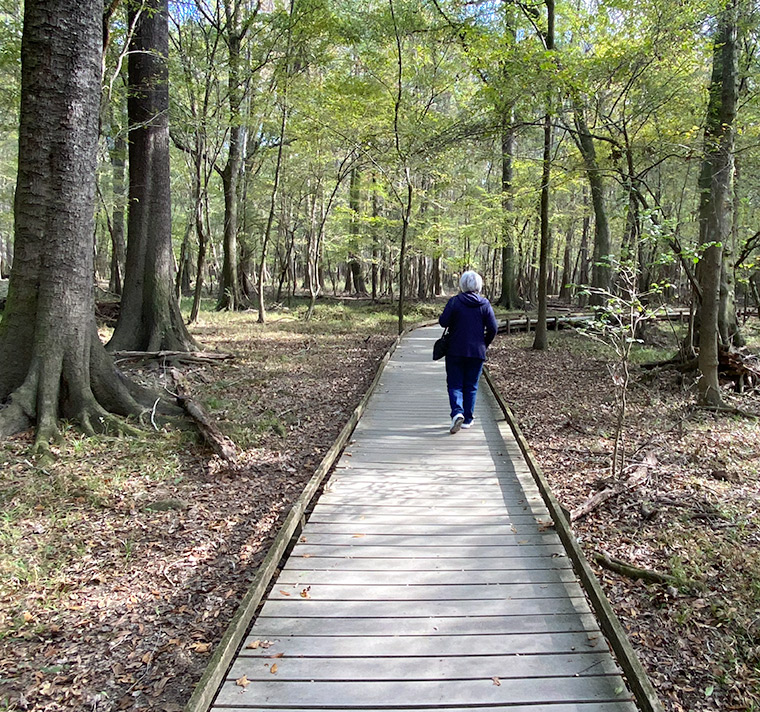
Here is a view of the boardwalk and Joyce heading out.
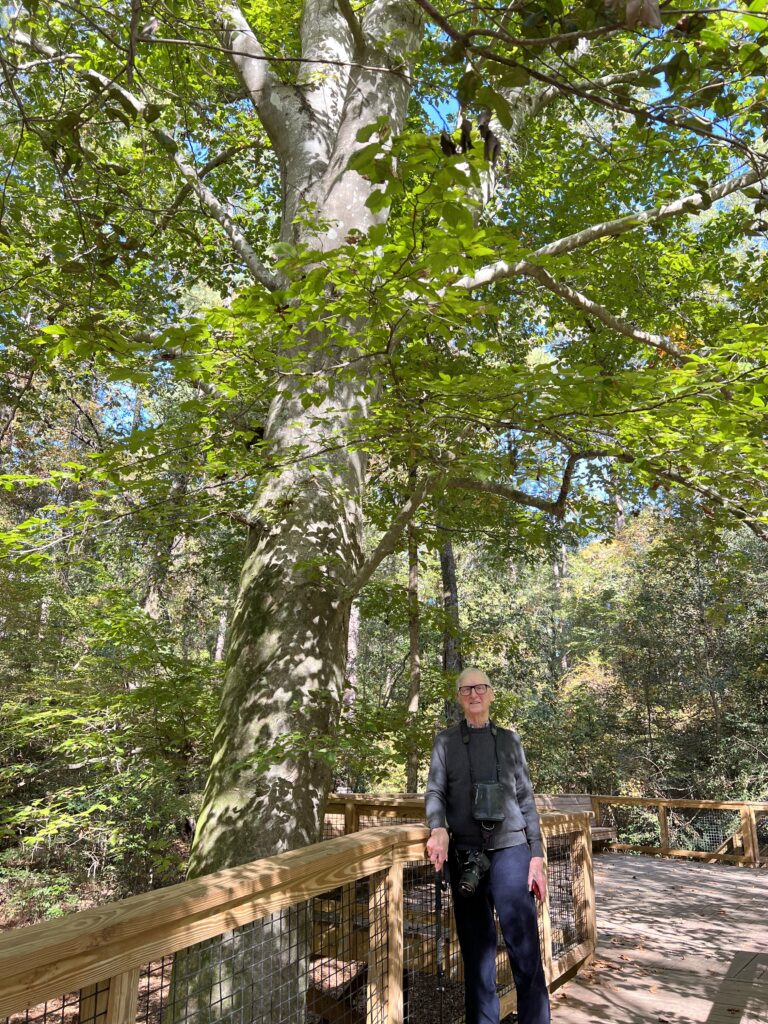
One if the first things we stopped to examine was this Beech tree (Fagus grandifolia). The smooth grey bark is a characteristic of this tree. Often one finds initials or dates carved into the bark, but this tree was fortunately unmarked.
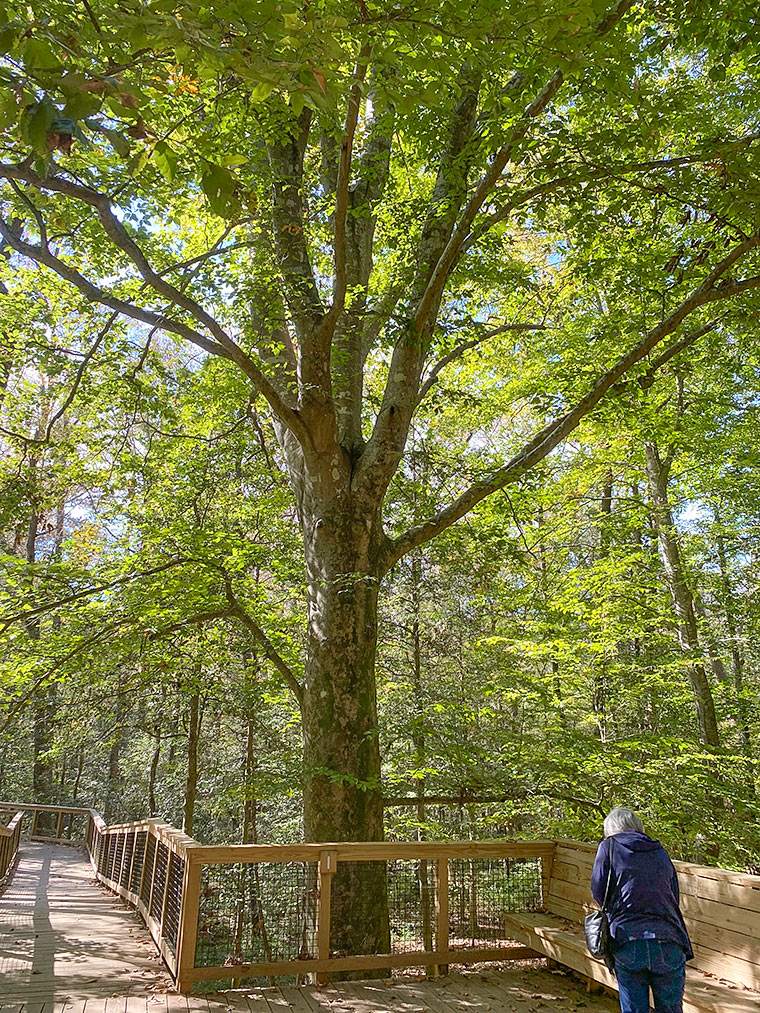
Joyce is collecting some of the fruits from the Beech tree.
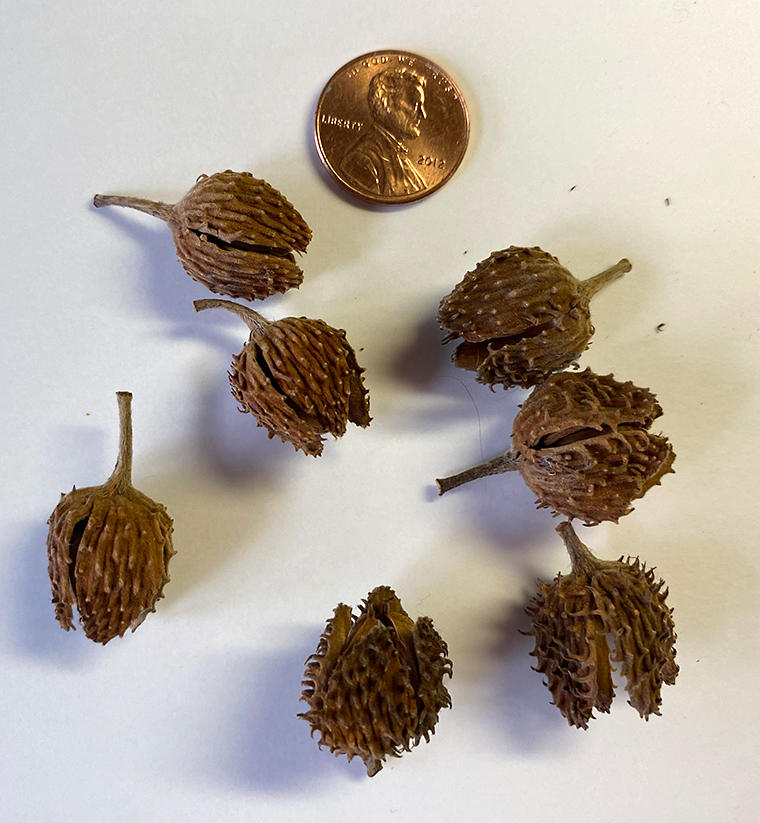
For such a grand large tree, the mature fruits (nuts) of the beech are very small.
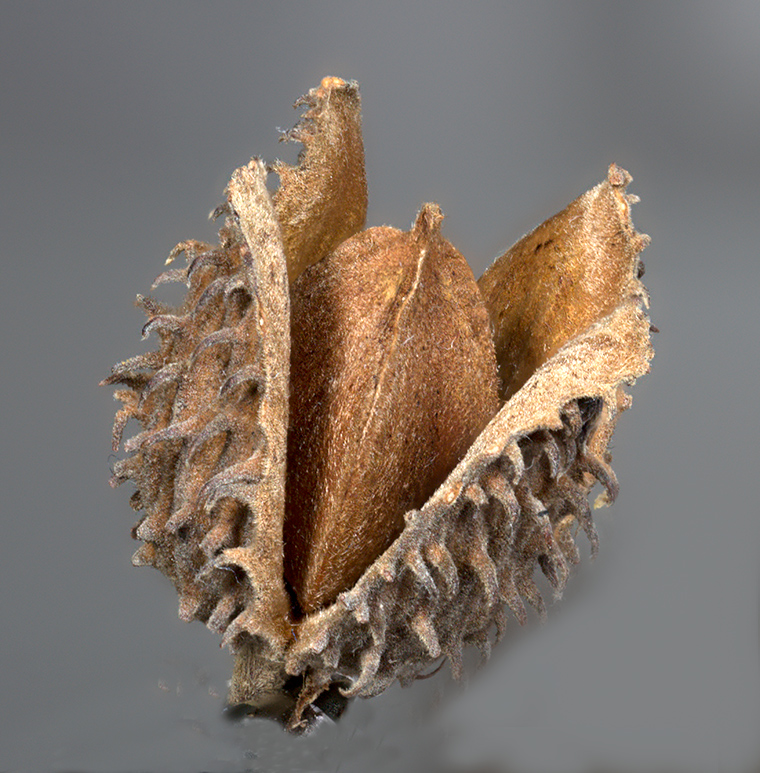
Each spiny husk encloses a small nut which is triangular in cross section. Despite their small size, the nuts are savored by many sorts of wildlife, including birds, squirrels, and chipmunks and deer. They are also sometimes relished by small humans, and I can attest to that. When I was a small boy in Southern Indiana, my Uncle Cetus and Aunt Imelda had a large Beech tree in their front yard. My associates and I spent a lot of time removing these nuts from their spiny husks, then splitting them open with a fingernail to get at the meat inside. It takes a lot of beechnuts and a lot of effort to make a dent in the appetite of a young boy.
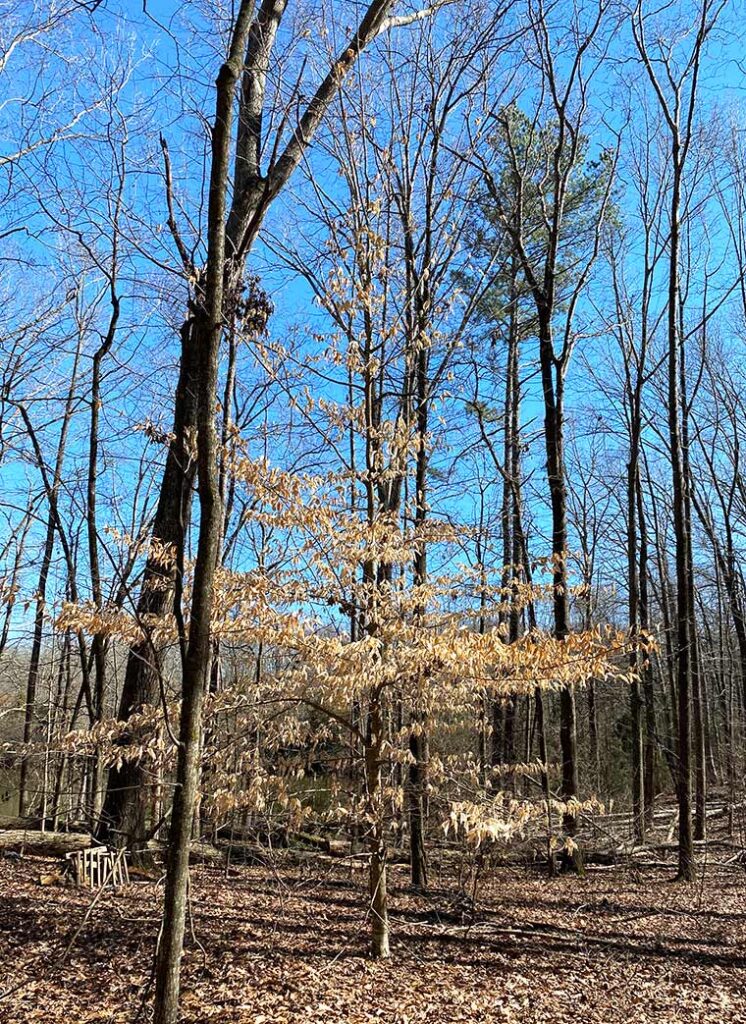
American Beech is easy to spot throughout the winter. It retains its leaves until early spring, and the leaves have a characteristic light tan color. This photograph was taken in the middle of February. Note that the Beech tree has retained leaves while all the other deciduous trees shed their leaves much earlier.
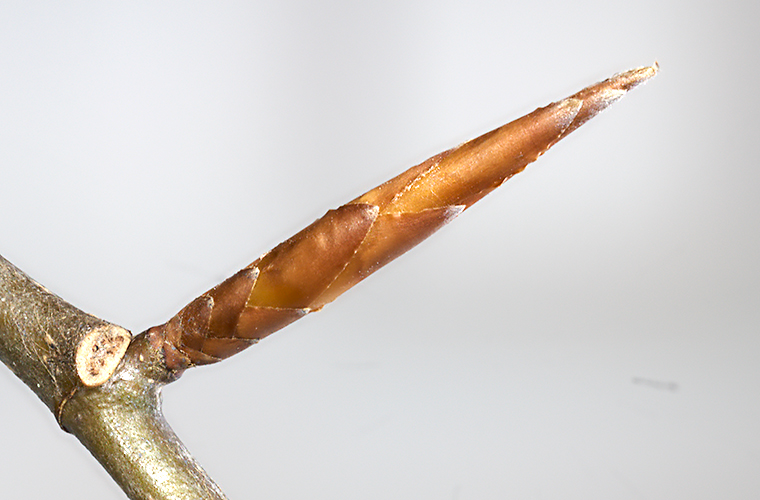
American Beech has characteristically long slender buds, which are an identifying character.
(More of what we saw in Congaree in part two)
